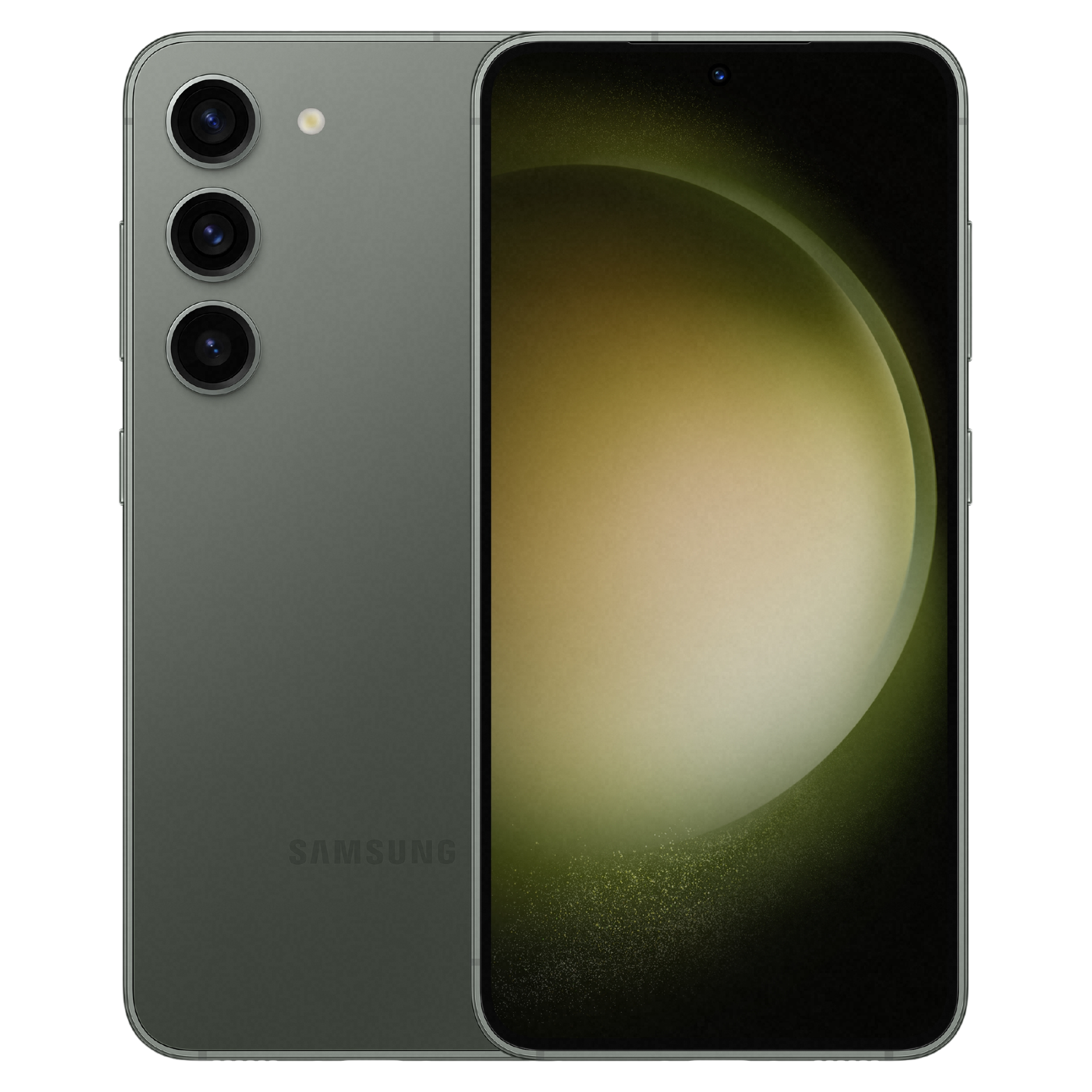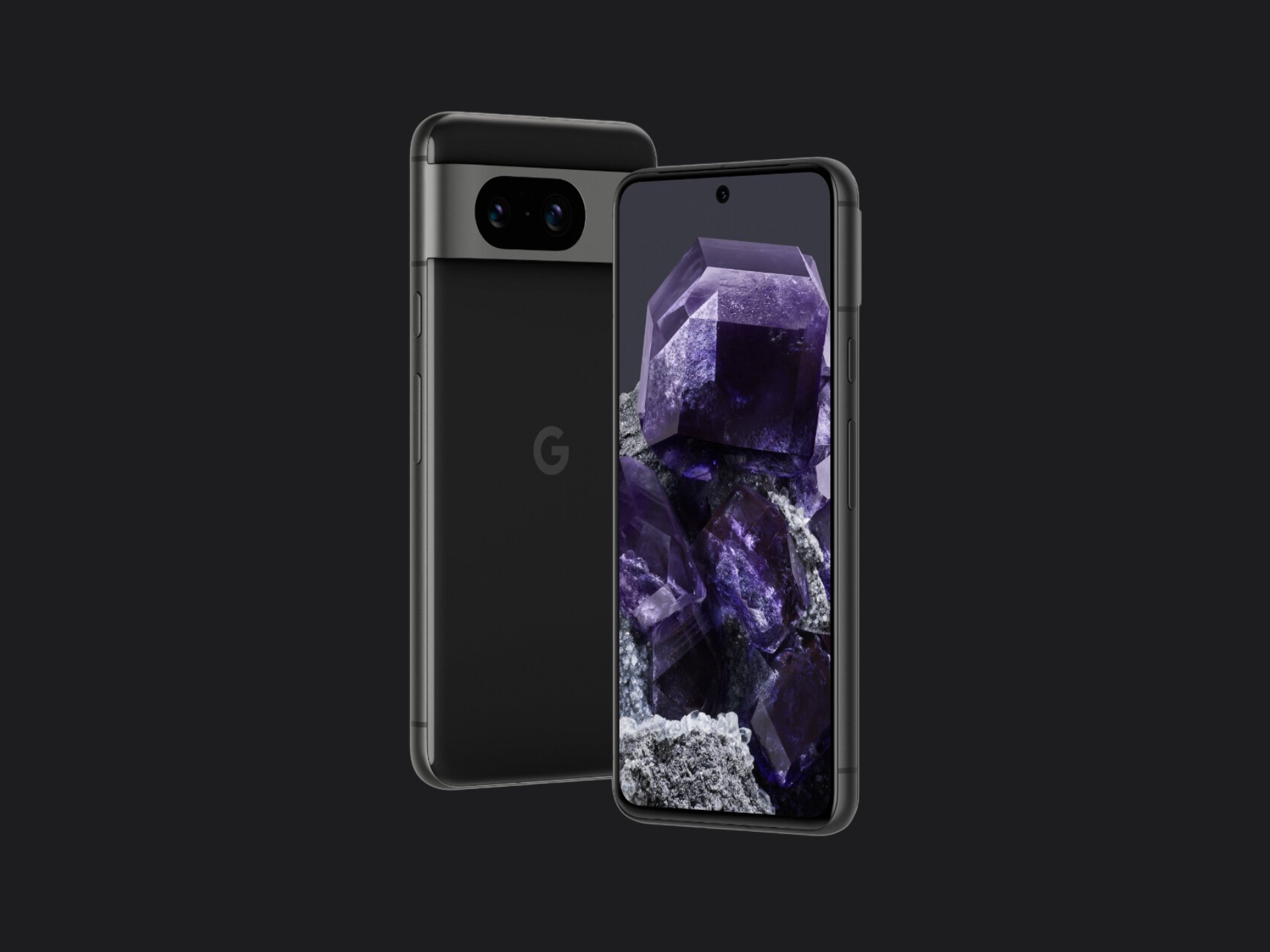
[adinserter block=”8″]
-
Google Pixel 8
The Google Pixel 8 features a 6.2-inch display with adaptive refresh rate (up to 120Hz). It also ships with the improved Google Tensor G3 and a 4,575 mAh cell that will allow for all-day use. And if you enjoy capturing images on your smartphone, its cameras, enhanced by AI will help capture the best moment in your life.
Pros- 120Hz display with 1400 nits of peak brigthness
- Faster performance
- Upgraded camera
- 7 years of OS & Security updates
Cons- It costs $100 more than the Pixel 7
- Still only 27W wired charging
-

Samsung Galaxy S23
The Samsung Galaxy S23 enters the market as a leading option for those who want a compact flagship. It ships with the powerful, yet efficient Snapdragon 8 Gen 2, and has a triple camera array that’s proven itself to be reliable in any scenario.
Pros- Compact and great for one-handed use
- Excellent performance
- Great camera
Cons- Charging speed isn’t competitive
The new Google Pixel 8 is a relatively affordable flagship, offering high-end specifications and premium materials with some of Google’s latest technologies and hardware. The new phone is one of the best Pixel phone of all time, equipped with the new Tensor G3 chipset, an upgraded camera, a larger battery, and a slightly tweaked design.
The Samsung Galaxy S23 has been available to the public since February, and the phone packs many enhancements over its predecessor, offering improved video and photo quality, the same impressive display, and excellent battery life that we’re used to seeing on Samsung smartphones.
Here, we’re comparing the Google Pixel 8 vs the Galaxy S23, both of this year’s best compact flagship devices. We’ll take a closer look at the design changes, price, display improvements, and other hardware and software improvements.
-
Google Pixel 8 Samsung Galaxy S23 Brand Google Samsung SoC Google Tensor G3 Qualcomm Snapdragon 8 Gen 2 Display 6.2-inch Super Actua Display 6.1-inch Dynamic AMOLED, 120Hz, 1750 nits RAM 8GB LPDDR5X 8GB Storage 128GB or 256GB 128GB (UFS 3.1), 256GB (UFS 4.0) Battery 4,575 man 3,900 mAh Ports USB-C (Gen 3.2) USB-C Operating System Android 14 One UI 5.1 based on Android 13 Front camera 10.5MP Dual PD, f/2.2, Fixed Focus, 95-degree FoV 12MP, Dual Pixel PDAF Connectivity Wi-Fi 7, 6E, or 6 (based on region), Bluetooth 5.3, 5G, LTE 5G, LTE, Wi-Fi 6E, Bluetooth 5.3 Dimensions 150.5 x 70.8 x 8.9 mm 146.3 x 70.9 x 7.6mm Colors Rose, Obsidian, Hazel Phantom Black, Cream, Green, Lavender; Samsung.com exclusive colors: Lime, Graphite, Sky Blue, Red Weight 187 grams 168 grams Charge speed 27W 25W wired, 15W wireless, and 4.5 reverse wireless IP Rating IP68 IP68
Google Pixel 8 vs Galaxy S23: Price & Availability
The Google Pixel 8 comes with 8GB of RAM and 128/256GB storage configurations. The default model retails for $699, while the higher capacity costs $759. All models come in Hazel, Obsidian and Rose colors and are available at most retailers and carriers across the country. In case you want to trade-in, look at the prices Google is offering for your current smartphone.
The Samsung Galaxy S23 launched in February, 2023. The device came with 8GB of RAM and 128/256GB of storage, costing $800 and $860, respectively. The phone is available in Phantom Black, and Lavender color options for the base unit, and Phantom Black for the 256GB version. Both smartphones are widely available at most retailers and careers, and both smartphones come with a variety of bundles and discounts to sweeten the deal.
Google Pixel 8 vs Galaxy S23: Design & Display
The Google Pixel 8 looks very similar to its predecessor. It’s a small iterative update. The Galaxy S23 is similar and has a lot in common with the Galaxy S22 in terms of design. Both smartphones are compact, lightweight, and small, but the Galaxy takes the crown for being lighter and smaller. The Pixel 8 measures 150.5 x 70.8 x 8.9 mm, while the Galaxy S23 is 146.3 x 70.9 x 7.6 mm. It’s shorter, thinner, and weighs less at 168 g than the Pixel’s 187 g.
Both phone come with relatively small and compact displays. The Pixel 8 has a 6.2-inch OLED panel with 120Hz refresh rate and up to 2000 nits of peak brightness. The Galaxy S23 has an equally compact, 6.1-inch Dynamic AMOLED 2X display with 120Hz refresh rate and up to 1750 nits of peak brightness. Both display technologies support HDR10+ video playback, and while the Pixel has a brighter panel, both will be sufficiently bright to use outdoors and indoors.
Google Pixel 8 vs Galaxy S23: Camera
The Pixel 8 features a 50MP f/1.7, 25mm primary sensor with multi-directional PDAF, Laser AF, and OIS. The secondary camera is a 12MP ultrawide with f/2.2 and 126-degree FOV. The Galaxy S23 uses a 50MP, f/1.8, 24mm, sensor with PDAF and OIS, a 12MP, f/2.2 ultrawide with 120-degree FoV, and a 10MP telephoto with PDAF, OIS, and 3x optical zoom.
Google claims the new camera will provide slightly improved still photos and videos. There are many changes and improvements under the hood that enhance the quality in low-light and in challenging lighting conditions.
The front-facing camera on the Pixel 8 is a 10.5MP sensor with f/2.2, 20mm lens with PDAF. The Galaxy S23 sports a 12MP sensor with f/2.2, 26mm lens, with PDAF.
In terms of quality, both devices will perform as you would expect, and we’ll have to wait for a side-by-side comparison to inspect the images. As it stands, both smartphones will be excellent for everyday users and those who want to take beautiful photos in all lighting conditions, but the telephoto camera on the Galaxy might offer slightly more, in terms of functionality.
Google Pixel 8 vs Galaxy S23: Battery
The Pixel 8s fairly small, yet Google somehow managed to fit a large battery inside it. The device packs a hefty 4575 mAh cell. In contrast, the Galaxy S23 packs a 3900 mAh battery, but it features the Snapdragon 8 Gen 2 chipset. The Tensor G3 is said to improve performance and efficiency over the Tensor G2, but we yet to see how it affects the battery.
When it comes to charging, the Pixel 8 supports 27W wired, and 18W wireless charging. The Galaxy S23 supports 25W wired and 15W wireless charging. Both phones can go from 0% to 50% in 30 minutes, and support reverse wireless charging.
Both devices have the same slow charging technologies, but on paper, the Pixel 8 is expected to outperform the Galaxy S23. It has a significantly larger battery, and while the Google Tensor G3 isn’t expected to be as fast as the Snapdragon 8 Gen 2, we expect the device to yield great results. As always, we’ll have to wait for the full review to learn more.
Google Pixel 8 vs Galaxy S23: Which should you buy?
If you made it this far, you may have already realized that these two phones have a lot in common. These handsets are compact, thin and light, providing flagship specifications, hardware, and software. However, when it comes to support, the Google Pixel 8 takes the crown. The company promised 7 years of OS, feature, and security updates for the Pixel 8, meaning that it’ll continue receiving updates until at least 2030.
In contrast, Samsung only offers 4 years of OS and five years of security updates, which is still excellent compared to the rest of the industry and other smartphone makers. Many other smartphone brands only offer three years of updates, so while Google is winning this one, Samsung also deserves some bonus points especially as the company has gone from being one of the slowest to update its devices, to one of the fastest in recent years.
If you’re looking for a stock experience, and you heavily rely on Google’s suite of apps, and you want to hold on to your smartphone for many more years, the Pixel 8 is a clear winner. However, if you’re looking for more personalization options, excellent hardware and software, then the Samsung Galaxy S23 is worth considering. There are no winners or losers here, and the decision will lay on whichever of these devices offers the better package for your needs.
[adinserter block=”8″]
Credit : Source Post







